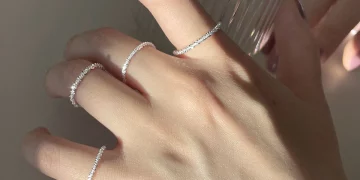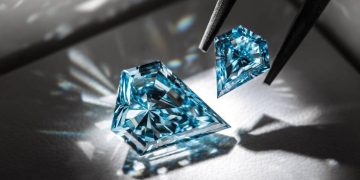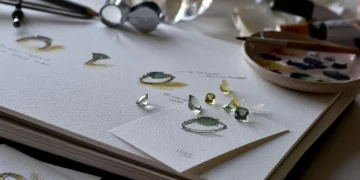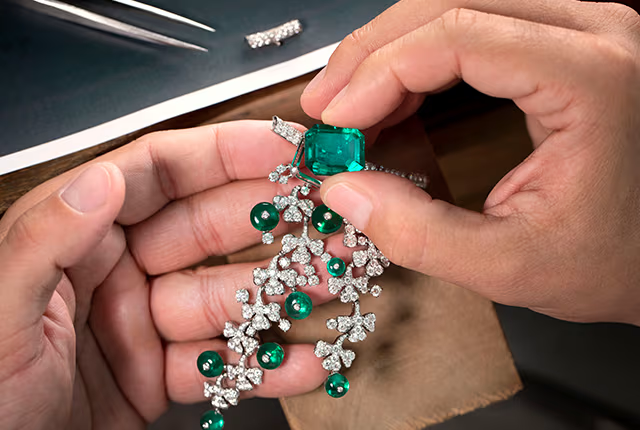In the world of high-end luxury, jewelry is more than just an accessory; it’s a statement of wealth, status, and personal style. As the demand for personalized and unique pieces grows, top jewelry designers are turning to innovative craftsmanship to set their creations apart from the competition. Crafting truly exceptional pieces requires a deep understanding of materials, techniques, and technology. So, how do jewelry designers push the boundaries of traditional methods to enhance the uniqueness of their luxury jewelry? In this article, we will explore how innovation in craftsmanship plays a pivotal role in creating one-of-a-kind, luxurious pieces that captivate the hearts of consumers.
1. The Role of Craftsmanship in Luxury Jewelry
A. Traditional Techniques: A Foundation for Innovation
While innovative craftsmanship is crucial for enhancing uniqueness, many of today’s top jewelry designers begin with traditional techniques that have been passed down for generations. These classic methods, such as filigree, enamel work, hand-engraving, and stone setting, are often combined with modern technology to create pieces that exude timeless elegance. Mastering these techniques is essential for any high-end jewelry designer because they offer the foundational skills needed to execute intricate and highly detailed designs.
However, innovation comes into play when designers push beyond the norms of traditional craftsmanship and infuse modern techniques, materials, and technology into their creations. The combination of old-world methods with contemporary approaches creates an exciting fusion that enhances the uniqueness and quality of luxury jewelry.
B. The Desire for Exclusivity
Exclusivity is a hallmark of luxury jewelry, and customers are constantly seeking one-of-a-kind pieces that reflect their individuality. Jewelry designers who are able to integrate innovative craftsmanship into their designs can create collections that are truly unique. Whether it’s through the creation of a limited-edition collection, the use of rare materials, or the incorporation of unconventional techniques, innovative craftsmanship helps designers differentiate themselves and offer their clientele something that cannot be found anywhere else.
2. Innovation in Materials: Pushing the Boundaries
A. Unique Gemstones and Materials
One of the most direct ways that jewelry designers enhance the uniqueness of their creations is through the use of rare gemstones and unconventional materials. The desire for exclusivity often leads designers to seek out rare gemstones that are not commonly used in mass-market jewelry.
For example, tanzanite, Paraiba tourmaline, and imperial jade are gemstones that have recently gained popularity in high-end jewelry for their unique color properties and rarity. Designers like Graff and Van Cleef & Arpels frequently incorporate unique stones into their pieces, creating an element of surprise and elegance that adds immense value to their collections. Similarly, meteorite and fossilized wood have been used in luxury jewelry, pushing the boundaries of material selection and showcasing the designer’s creativity in combining unusual elements with traditional gems.
In addition to gemstones, the use of innovative metals such as rose gold, blackened platinum, and carbon fiber allows designers to offer pieces that look and feel distinctly different from anything seen before. 18K gold, titanium, and 18K rose gold can be mixed with other elements like ceramics or wood for visually striking, avant-garde pieces that challenge conventional expectations of luxury.
B. Sustainable and Ethical Materials
Another area where innovation in materials has played a crucial role is the growing demand for sustainable and ethical sourcing. As consumers become more conscious of the environmental impact of luxury products, designers are seeking ways to integrate eco-friendly materials into their creations. Lab-grown diamonds, recycled gold, and ethically sourced gemstones are becoming increasingly popular in the luxury jewelry market.
Designers like Chopard and Tiffany & Co. have made significant strides in using sustainable materials in their collections, enhancing the uniqueness of their jewelry by not only creating luxurious designs but also aligning them with contemporary ethical values. Incorporating sustainable materials into their creations ensures that these pieces are not just visually stunning but also meet the growing demand for environmental responsibility.
3. Technological Innovation: Merging Craftsmanship with Technology
A. 3D Printing and CAD
While traditional craftsmanship has long been the heart of jewelry design, the integration of technology is allowing designers to take their work to the next level. 3D printing and Computer-Aided Design (CAD) have revolutionized the jewelry industry, allowing designers to experiment with intricate designs and complex structures that would have been nearly impossible with manual techniques alone.
3D printing allows for the creation of highly detailed pieces with precision and accuracy, offering an immense amount of freedom for designers. This technology can be used to design custom pieces for clients, ensuring that each piece is unique and tailored to individual preferences. Designers can create intricate textures, geometric patterns, and openwork designs that would be challenging to achieve through traditional methods. This allows for a level of creativity that elevates the uniqueness of the final product.
CAD software also enables designers to visualize their creations before they are physically made. By manipulating virtual designs, jewelry makers can test out different ideas, adjust proportions, and incorporate feedback quickly. This technology streamlines the design process and empowers designers to push the limits of traditional craftsmanship, ultimately contributing to more innovative and bespoke jewelry collections.
B. Laser Cutting and Engraving
Laser cutting and engraving are innovative techniques that have gained prominence in luxury jewelry design. These technologies allow for the creation of intricate details and patterns that are both aesthetically pleasing and precise. Laser engraving, for instance, can be used to etch fine details onto precious metals, gemstones, or even enamel, creating a level of customization that was not previously possible.
Laser cutting also offers designers the ability to experiment with non-traditional forms and delicate structures in their pieces. This capability enhances the uniqueness of each piece, as it enables designers to create custom engravings, personalized messages, or even signature motifs that are unique to individual clients. Brands like Bulgari and Harry Winston have embraced these technologies to craft pieces that stand out for their fine details and innovative designs.
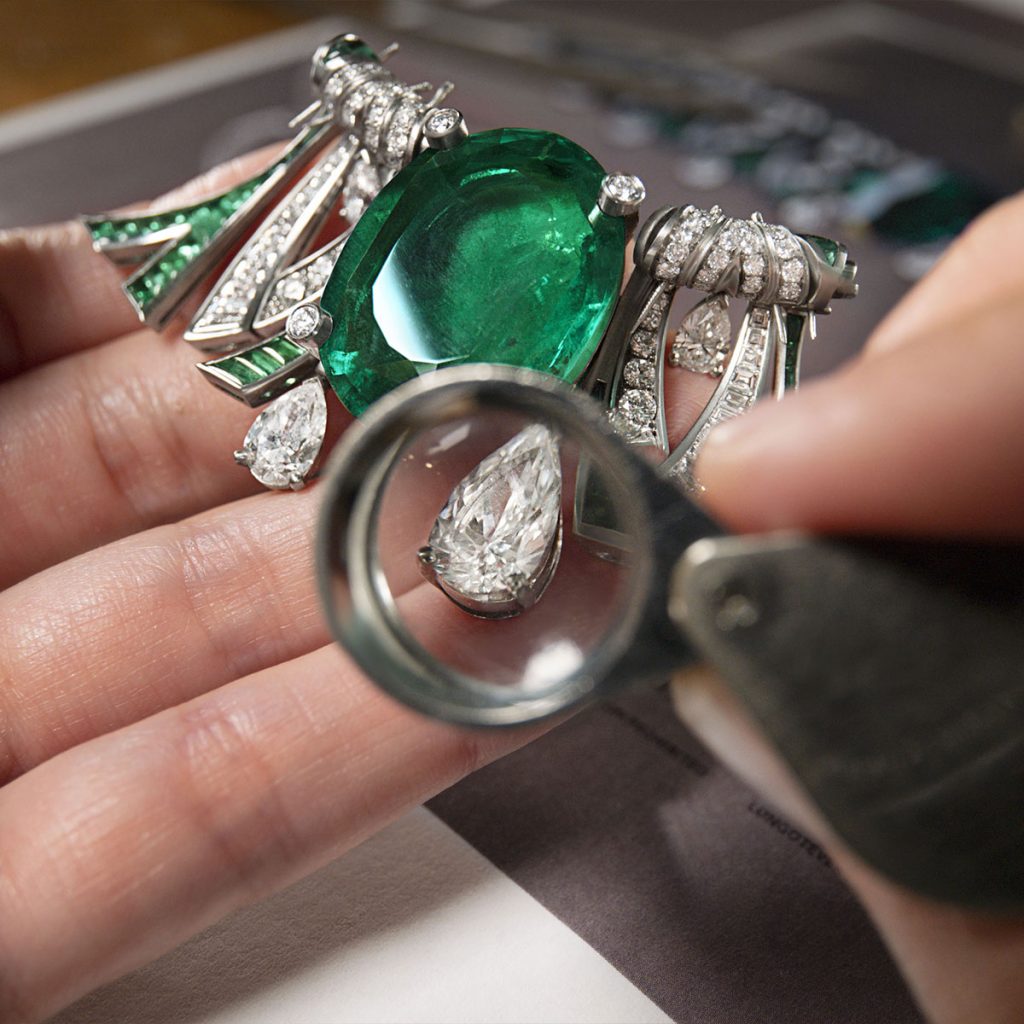
4. The Art of Combining Traditional and Modern Techniques
A. Hybrid Craftsmanship: Blending Old and New
Perhaps one of the most fascinating ways jewelry designers enhance uniqueness is by combining traditional techniques with modern innovations. Handcrafting and machine work can be integrated to create pieces that showcase the best of both worlds. For example, a designer might start with hand-carving a piece from precious metal before using laser technology to add intricate textures or 3D printing to mold a gemstone setting.
Filigree work, a traditional technique that involves weaving fine metal wires into delicate patterns, can be combined with modern diamond-cutting techniques to create pieces that are both timeless and innovative. The juxtaposition of old-world craftsmanship and new-world technology produces jewelry that is uniquely luxurious, highly intricate, and undeniably modern.
5. Crafting Pieces for the Individual
A. Bespoke Jewelry and Personalization
One of the most significant ways in which designers can enhance the uniqueness of their pieces is by offering bespoke jewelry services. Custom-made jewelry allows customers to be part of the design process, ensuring that every aspect of the piece reflects their individual style and preferences.
Designers can incorporate personalized engravings, family heirlooms, or unconventional gemstones into their bespoke designs, offering customers the ability to create a truly unique piece. This level of personalization ensures that no two pieces are alike, making them highly valuable and exclusive. The personal touch added to each bespoke design makes the jewelry feel deeply meaningful, adding a layer of emotional value that mass-produced pieces cannot offer.
6. Conclusion: Innovation and Uniqueness in Luxury Jewelry
In the luxury jewelry industry, innovation in craftsmanship is what sets the finest pieces apart from the rest. By incorporating new materials, technologies, and design techniques, jewelry designers are able to create stunning, one-of-a-kind pieces that not only stand out in terms of artistry but also cater to the increasing demand for individual expression.
Through the fusion of traditional and modern techniques, the use of unconventional materials, and the integration of cutting-edge technologies such as CAD and 3D printing, designers can push the boundaries of what is possible in jewelry creation. Ultimately, it is this blend of innovation and craftsmanship that enhances the uniqueness of luxury jewelry, ensuring that each piece is not only a work of art but also a lasting symbol of individuality, exclusivity, and creativity in the world of high-end fashion.

